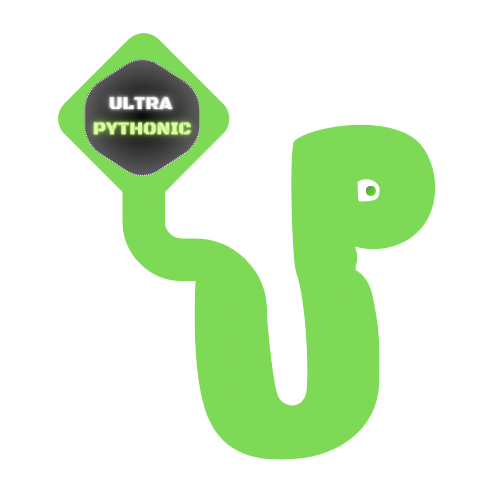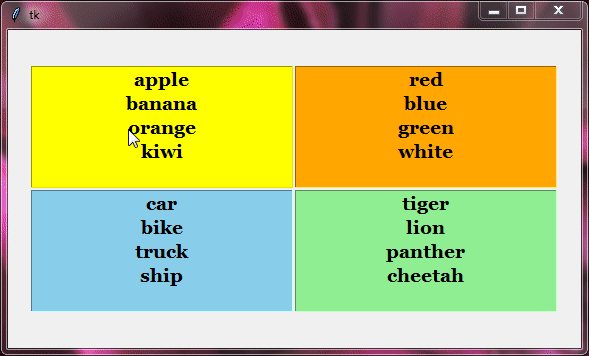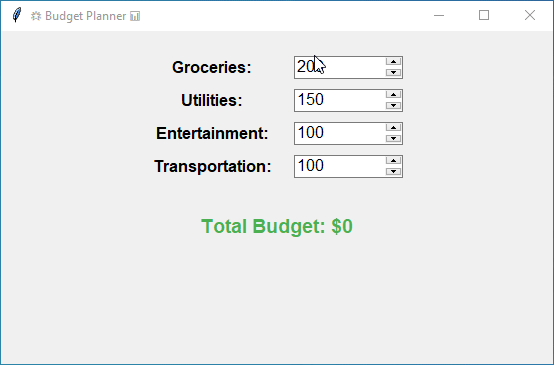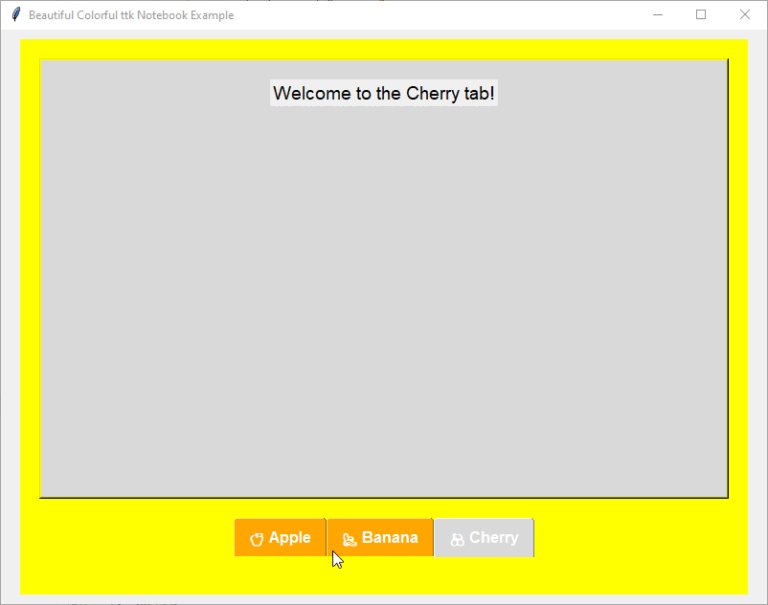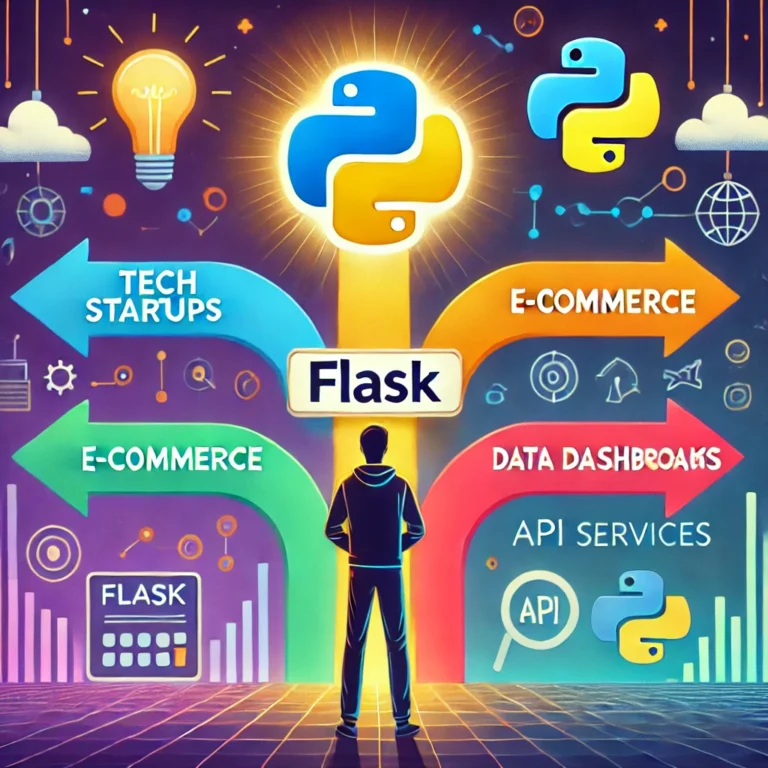7 Python Web Frameworks in High Demand in 2024
In today’s world, having web development skills is more important than ever. As more businesses and services move online, the demand for web developers is increasing. Whether it’s building online stores, web applications, or interactive websites, the need for skilled web developers is on the rise.
Python And Web Frameworks
Python is one of the most popular programming languages for web development. It’s known for being easy to learn and use, which makes it a great choice for both beginners and experienced developers.
Web frameworks are tools that help developers build web applications more easily. They provide pre-written code and tools that simplify common tasks like routing (deciding which page to show when a user clicks a link), interacting with databases, and handling user logins. By using a framework, developers can save time and focus on the unique parts of their projects.
As we look toward 2024, some Python web frameworks are becoming particularly popular in the job market. Knowing these frameworks can significantly boost your career, whether you’re just starting out or have years of experience.
In this blog post, we’ll cover the top seven Python web frameworks in high demand right now. We’ll explain what makes each framework unique, what they’re commonly used for, and why they’re important for your career.
1. Django – Full-stack framework
Django is in high demand, especially in enterprise environments and large-scale projects. Its comprehensive features and strong security make it a preferred choice for companies needing robust web applications.
Key Features
Full-Stack Framework: Django includes everything needed to build a web application, from the front-end to the back-end.
Built-in Admin Interface: It offers a powerful admin interface for managing site content easily, saving time on building custom tools.
Strong Security Features: Django includes protections against common security threats like SQL injection and cross-site scripting.
ORM for Database Management: The Object-Relational Mapping (ORM) system allows developers to manage databases using Python code instead of SQL.
Cons
- Django’s comprehensive nature can be overwhelming for beginners, with many features to learn.
- Its structure can be restrictive for projects needing more flexibility.
Use Cases
Django is great for building:
- Content Management Systems (CMS)
- E-commerce Sites
- Social Networks
2. Flask – Lightweight and minimalistic
Flask is a simple and flexible framework known for being lightweight and minimalistic, which means it provides just the basics for building web applications and lets you add other features as needed.
It is especially popular in startups and for projects that need to be developed quickly. Its simplicity makes it a favorite for developers who need to get applications up and running fast.
Key Features
Microframework with Modularity: Flask includes only the essential tools you need to start building a web app. You can add extra features, like databases or authentication, as separate components.
Extensible with Add-Ons: You can extend Flask’s functionality by adding various extensions. This makes it easy to customize Flask to fit your specific needs.
Jinja2 Templating Engine: Flask uses Jinja2 to help you create dynamic web pages. It allows you to easily insert data into HTML templates.
Simple and Flexible Routing: Flask’s routing system is easy to understand and use. It lets you easily connect URLs to functions in your app.
Cons
- Flask doesn’t come with built-in features like user authentication or database management. You’ll need to add these features yourself or use third-party tools.
- Since Flask is so customizable, different developers might use different tools and libraries, which can lead to inconsistencies in projects.
Use Cases
Flask works well for:
- Prototyping
- RESTful APIs
- Simple Web Applications
3. FastAPI – Modern, fast (high-performance)
FastAPI is a modern Python web framework that lives up to its name—it’s designed to be fast and efficient. It is becoming increasingly popular, especially in cutting-edge fields like AI and data science. Its modern features and high performance make it a sought-after skill in these areas.
As more companies look for efficient ways to build and deploy APIs, FastAPI’s demand in the job market is expected to grow, making it a valuable framework to learn if you’re aiming to work in tech’s fastest-growing sectors.
Key Features
Asynchronous Support: FastAPI is designed to support asynchronous programming, which makes it ideal for handling multiple tasks at once, like managing lots of user requests simultaneously.
Type Hints and Pydantic for Data Validation: FastAPI uses Python’s type hints and Pydantic for automatic data validation. This means your code is more reliable and easier to maintain.
Auto-Generated Interactive API Docs: One of FastAPI’s standout features is its ability to automatically generate interactive documentation for your APIs, making it easier to test and explore them.
High Performance Comparable to Node.js and Go: FastAPI offers performance that’s on par with other high-speed frameworks like Node.js and Go, making it a top choice for developers who need speed.
Cons
- FastAPI’s use of advanced features like asynchronous programming and type hints might be challenging for beginners who are not familiar with these concepts.
- Compared to older frameworks like Django or Flask, FastAPI has a smaller community and fewer third-party extensions, which might limit available resources or support.
- For smaller or simpler projects, the advanced features of FastAPI might be more than what’s needed, potentially adding unnecessary complexity.
Use Cases
FastAPI is ideal for:
- Building APIs
- Real-Time Applications
- Machine Learning Models
4. Tornado – Asynchronous networking library
Tornado is known for handling a large number of simultaneous connections efficiently. It is highly specialized in fields where real-time performance and the ability to manage many simultaneous connections are critical.
Its use in developing real-time applications, like chat platforms or live data feeds, makes Tornado a sought-after skill for developers working on high-performance web services.
Key Features
Non-Blocking I/O: Tornado’s non-blocking I/O lets it handle many connections at once, making it ideal for real-time apps.
WebSockets Support: It has built-in support for WebSockets, enabling live, two-way communication between clients and servers.
Scalable Web Applications: Tornado is built to scale, handling high-traffic loads while maintaining performance.
Real-Time Web Applications: It’s perfect for building applications that require instant updates, like online games or collaborative tools.
Cons
- Tornado’s asynchronous programming can be tough to learn, especially if you’re not familiar with non-blocking I/O.
- It has fewer third-party tools and a smaller community than some other frameworks.
- Tornado’s advanced features may be unnecessary for basic web applications.
Use Cases
Tornado is great for:
- Real-Time Web Applications
- Chat Applications
- Long Polling
5. CherryPy – Minimalistic and object-oriented
CherryPy is a minimalist framework that’s been around since 2002. It doesn’t require developers to adhere to any specific project structure, making it flexible and easy to integrate into existing projects.
CherryPy is a good choice for developers looking to build small to medium-sized web applications or APIs without the overhead of larger frameworks. However, it’s not as widely used in the job market as frameworks like Django or Flask.
Key Features
Minimalistic Design: CherryPy provides just the essentials, allowing developers the freedom to structure their applications as they see fit.
Embedded Web Server: CherryPy comes with a built-in, production-ready web server, so you don’t need to rely on an external server like Apache or Nginx.
Easy to Learn: Its simplicity and similarity to standard Python programming make CherryPy easy to pick up, even for those new to web development.
Framework-Agnostic: CherryPy can be used with other web technologies, allowing developers to integrate it with other frameworks or tools as needed.
Cons
- CherryPy’s minimalist approach means it doesn’t come with many built-in features like ORM or templating engines, so you’ll need to add these yourself.
- CherryPy has a smaller user base and fewer resources compared to more popular frameworks like Django or Flask.
- Due to its simplicity, CherryPy might not be the best choice for very large or complex applications that require a lot of built-in functionality.
Use Cases
CherryPy is well-suited for:
- Simple Web Applications
- RESTful APIs
- Embedded Applications
6. Web2py – Ease of use
Web2py is a full-stack web framework that allows developers to quickly build and manage web applications without needing extra tools, making it an all-in-one solution for web development. While not as popular as other frameworks, it’s valued for rapid development and educational purposes.
Key Features
Integrated Web-Based Interface: Develop and manage your apps directly from your browser with Web2py’s built-in interface.
Built-In Ticketing System: Automatically generates error tickets, helping you track and fix issues easily.
Role-Based Access Control: Manage user roles and permissions right out of the box.
Multi-Database Support: Supports multiple databases without requiring extra configuration.
Cons
- Web2py’s all-in-one approach can be limiting if you need more customization or specific tools.
- Fewer third-party plugins and a smaller community mean fewer resources and support.
- Some aspects of Web2py may feel dated compared to newer frameworks.
Use Cases
Web2py is great for:
- Rapid Application Development
- Educational Projects
- Administrative Tools
7. TurboGears – Combines the best elements
TurboGears framework brings together the best features of multiple frameworks. While not as widely known as some other frameworks, it’s a valuable tool for complex projects, making it a solid choice for developers working on sophisticated, large-scale applications.
Key Features
Multi-Database Support: TurboGears can work with various databases.
Flexible ORM: It uses an Object-Relational Mapper (ORM) that allows for easy database interactions.
Command-Line Tools: TurboGears includes powerful command-line tools to help manage projects, making development smoother.
Scalable Architecture: Designed to scale, TurboGears is suitable for building applications that need to grow with user demands.
Cons
- Combining features from various frameworks can make TurboGears more complex to learn and master.
- With a smaller community, finding resources or third-party plugins might be more challenging compared to more popular frameworks.
Use Cases
TurboGears is ideal for:
- Customizable Applications
- Complex Systems
Conclusion
In 2024, mastering Python web frameworks like Django, Flask, FastAPI, Tornado, CherryPy, Web2py, and TurboGears can give your career a real boost. Each of these frameworks has its own strengths—Django offers a full-stack solution with strong security features, while Flask is great for smaller, quick projects. FastAPI is perfect for high-performance APIs and real-time applications, and Tornado shines in handling many connections at once, making it ideal for live web apps. CherryPy is simple and easy to learn, especially for those who like to keep things minimal. Web2py offers an all-in-one package for rapid development, and TurboGears combines the best features from different frameworks, making it flexible and scalable for more complex projects.
Learning these frameworks can make you a valuable asset in the job market. As web development continues to grow, knowing when and how to use these tools will help you stand out. Now is the perfect time to start experimenting with them, build your own projects, and refine your skills. Whether you’re new to the tech industry or looking to advance in your current role, getting comfortable with these Python frameworks can set you up for success.
